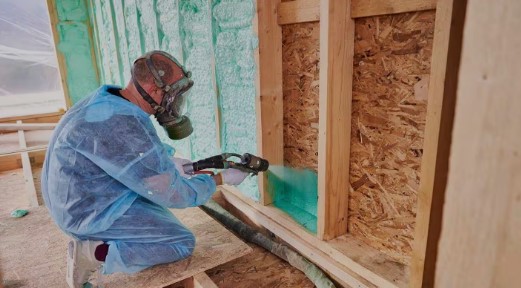Cellulose insulation is a type of insulation made from recycled paper products and treated with fire retardants. It is an eco-friendly and cost-effective option for insulating homes and buildings. With its ability to reduce energy consumption and provide soundproofing, cellulose insulation is becoming increasingly popular in the construction industry. This article will explore the benefits of cellulose insulation, its installation process, and its environmental impact. Additionally, we will discuss its thermal and acoustic performance and its potential drawbacks.
So, whether you’re a homeowner or a contractor, read on to learn more about cellulose insulation and its benefits for your project.
Benefits Of Cellulose Insulation
Cellulose insulation offers numerous benefits for homeowners. It is an eco-friendly option made from recycled paper and plant fibers, making it sustainable. Cellulose insulation provides excellent thermal performance, keeping homes cool in summer and warm in winter. It also has a high resistance to fire, mold, and pests, making it a safe and durable insulation option.
Additionally, cellulose insulation has soundproofing properties, reducing noise transmission within the home. Its ability to fill gaps and crevices ensures a more airtight seal, improving energy efficiency and reducing utility costs. With its cost-effectiveness and environmental advantages, cellulose insulation is a wise investment for any homeowner looking to improve the comfort and efficiency of their home.
Installation Process
The cellulose installation process involves the application of cellulose insulation, a sustainable and eco-friendly material derived from recycled paper. The process begins with the preparation of the space, ensuring it is clean and free of debris. Next, the cellulose fibers are blown into the designated areas using specialized equipment. These fibers interlock, creating a dense thermal barrier that effectively reduces heat transfer
The installation is versatile, and suitable for both new construction and retrofitting existing structures. Cellulose insulation excels in providing superior thermal performance, sound dampening, and fire resistance. It is a cost-effective solution that contributes to energy efficiency and environmental conservation. The cellulose installation process aligns with green building practices, promoting sustainability while enhancing comfort and reducing energy consumption in homes and buildings.
Environmental Impact
Cellulose insulation is an eco-friendly alternative to traditional insulation materials. Its environmental impact is a crucial factor to consider when choosing insulation for your home. Unlike other options, cellulose insulation is made from recycled materials, such as newspaper and paper waste, making it a sustainable choice.
By diverting paper waste from landfills, cellulose insulation helps reduce the carbon footprint of producing and disposing of these materials. In addition, cellulose insulation is energy-efficient, effectively trapping air and preventing heat transfer, which can contribute to lower energy consumption and reduced greenhouse gas emissions.
Furthermore, cellulose insulation has a long lifespan and can be easily recycled at the end of its useful life. This further reduces waste and minimizes the impact on the environment. Overall, cellulose insulation provides a greener alternative for homeowners who want to reduce their environmental footprint without compromising performance.
Considerations And Recommendations
Cellulose insulation is famous to many homeowners for its energy efficiency and environmental benefits. There are a few essential factors when considering cellulose insulation for your home. First, proper installation is crucial to ensure its effectiveness.
Hiring a professional contractor experienced in installing cellulose insulation is highly recommended. Additionally, it’s essential to understand the R-value of the insulation. The higher the R-value, the better the insulation’s thermal performance. Finally, consider the source of the cellulose material.
Cellulose insulation can be made from recycled newspaper, cardboard, or other paper products, making it a sustainable option. By following these guidelines, you can ensure that your cellulose insulation is installed correctly and provides optimal energy efficiency for your home.
Thermo Shield Llc Best Company For Cellulose Insulation
Thermo Shield LLC is widely recognized as the top choice for cellulose insulation. Their dedication to delivering high-quality products and exceptional customer service sets them apart in the industry. With a commitment to sustainability and energy efficiency, Thermo Shield LLC’s cellulose insulation is a superior choice for both residential and commercial applications.
Their innovative products provide effective thermal performance and contribute to a healthier indoor environment. Customers can trust Thermo Shield LLC for reliable solutions that meet their insulation needs while supporting environmental responsibility. Regarding cellulose insulation, Thermo Shield LLC consistently remains the best company choice for consumers seeking top-notch quality and performance.
Conclusion
Cellulose insulation offers numerous benefits for both homeowners and the environment. Its eco-friendly, non-toxic properties make it an ideal choice for insulating homes. With its energy efficiency and cost-effectiveness, cellulose insulation provides a sustainable solution for reducing energy consumption. Consider cellulose insulation for a greener, more efficient home.
